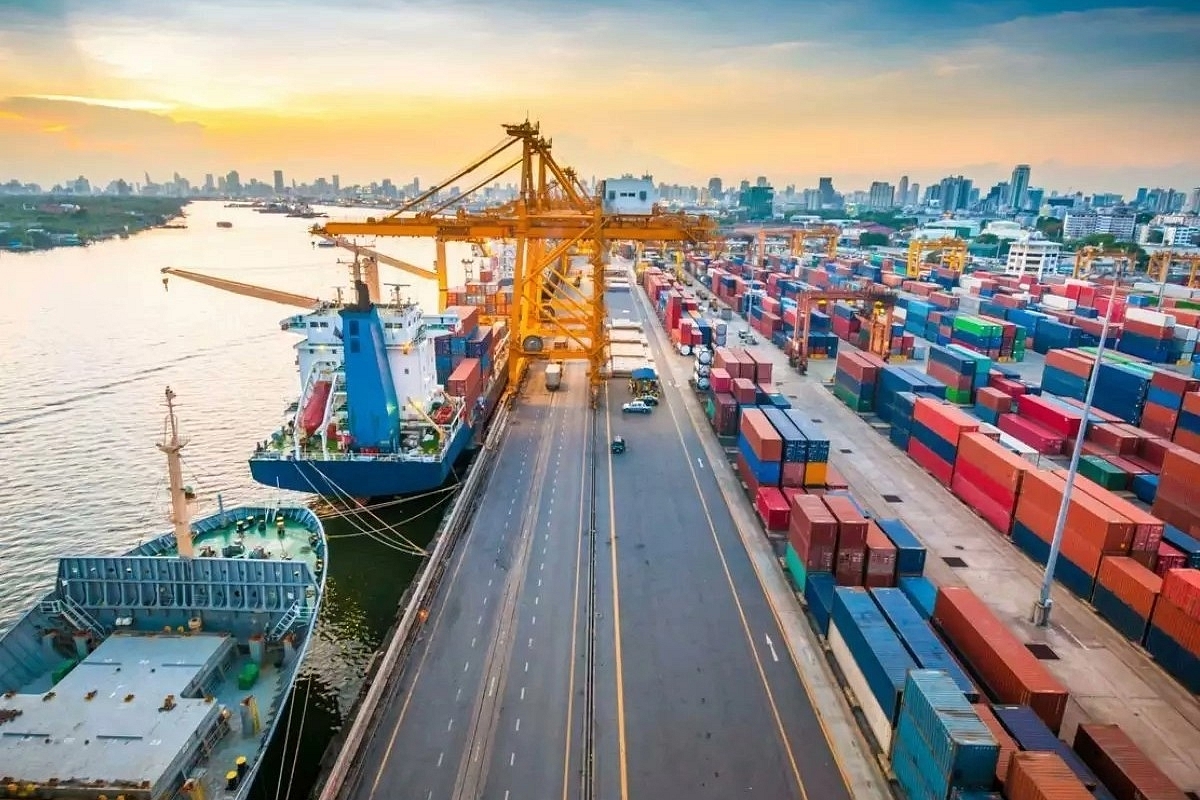News Headlines
12 Major Ports Increase Capacity By 83 Per Cent In Last Seven Years
- As part of Maritime India Vision (MIV) 2030, all major ports together need to undertake capacity addition to the tune of 423 MTPA.

Jawaharlal Nehru Port Trust (JNPT)
The capacity of major ports in the country has increased by 83 per cent in the last seven years.
This information was given by the Union Minister of Ports and Shipping, Sarbananda Sonowal, in a written reply to the Rajya Sabha on 13 November.
According to the reply, the capacity of major ports has increased from 871.52 million tonnes per annum (MTPA) in FY 2014-15 to 1,597.59 MTPA in FY 2021-22.
Similarly, the capacity of non-major ports in the country has increased from 991.67 MTPA in FY 2019-20 to 1,007.40 MTPA in FY 2021-22.
The total capacity added in major and non-major ports since 2020 is 78.41 MTPA.
12 Major Ports
Currently, India has 12 Major ports — Deendayal, Mumbai, Jawaharlal Nehru Port Trust (JNPT), Mormugao, New Mangalore, Cochin, Chennai, Ennore (Kamarajar), Tuticorin (V O Chidambaranar), Visakhapatnam, Paradip and Kolkata (including Haldia).
A maximum of three major ports are located in Tamil Nadu followed by two in Maharashtra and one each in Gujarat, Goa, Karnataka, Kerala, Andhra Pradesh, Odisha and West Bengal.
The major ports are wholly owned by the central government and governed by provisions of Major Port Authority Act, 2021.
No new major port has been constructed after the year 2020. All major ports in the country are functional ports.
These major ports have a total of 272 berths. A berth is basically an area where the cargo is loaded or discharged on and off the ships. Each port or terminal has several berths which usually have shore equipment for handling cargo, where the cargo is discharged, loaded and may be stored.
Out of 272 berths at major ports, 70 berths have been given on public private partnership (PPP) mode for operation and rest of the berths are port-owned.
There are 213 non-major ports managed by and under the control of respective state maritime board/state government.
Capacity Expansion
According to international standards, port capacity should be 30 per cent higher than cargo traffic to provide efficient services and lower the average turn-around and pre-berthing time.
Major ports’ capacity has been enhanced consistently to meet growing traffic needs, but the increase in traffic has not been proportional to the increase in capacity.
These ports have identified capacity expansion projects based on the following theme:
New berth addition in line with cargo profile
Existing berths upgrade to improve handling capacity
Existing berths conversion to handle new commodities
As part of Maritime India Vision (MIV) 2030, all major ports together need to undertake capacity addition to the tune of 423 MTPA.
A total investment cost of over Rs 33,400 crore has been envisaged for this capacity expansion. Out of this, approximately 95 per cent capacity expansion has been planned under PPP mode by major ports.
Support Swarajya's 50 Ground Reports Project & Sponsor A Story
Every general election Swarajya does a 50 ground reports project.
Aimed only at serious readers and those who appreciate the nuances of political undercurrents, the project provides a sense of India's electoral landscape. As you know, these reports are produced after considerable investment of travel, time and effort on the ground.
This time too we've kicked off the project in style and have covered over 30 constituencies already. If you're someone who appreciates such work and have enjoyed our coverage please consider sponsoring a ground report for just Rs 2999 to Rs 19,999 - it goes a long way in helping us produce more quality reportage.
You can also back this project by becoming a subscriber for as little as Rs 999 - so do click on this links and choose a plan that suits you and back us.
Click below to contribute.
Latest